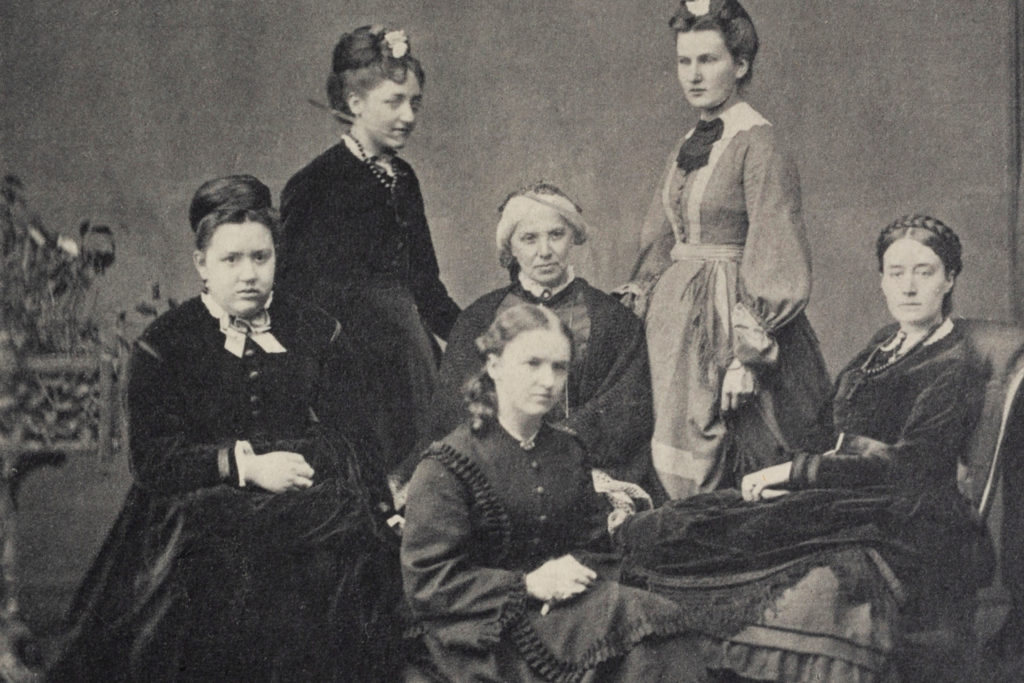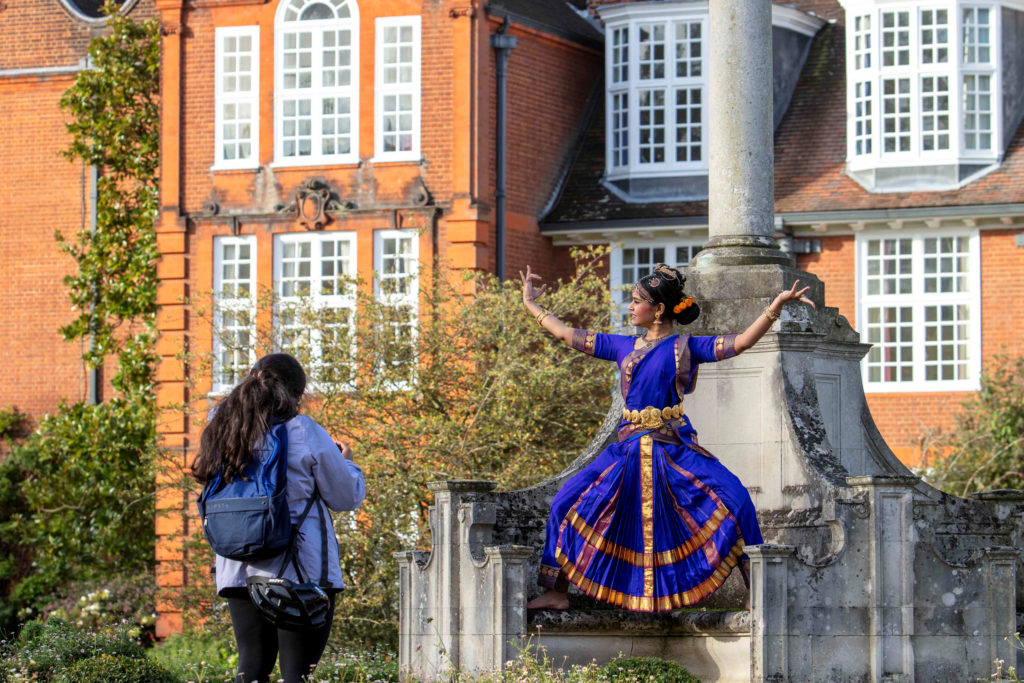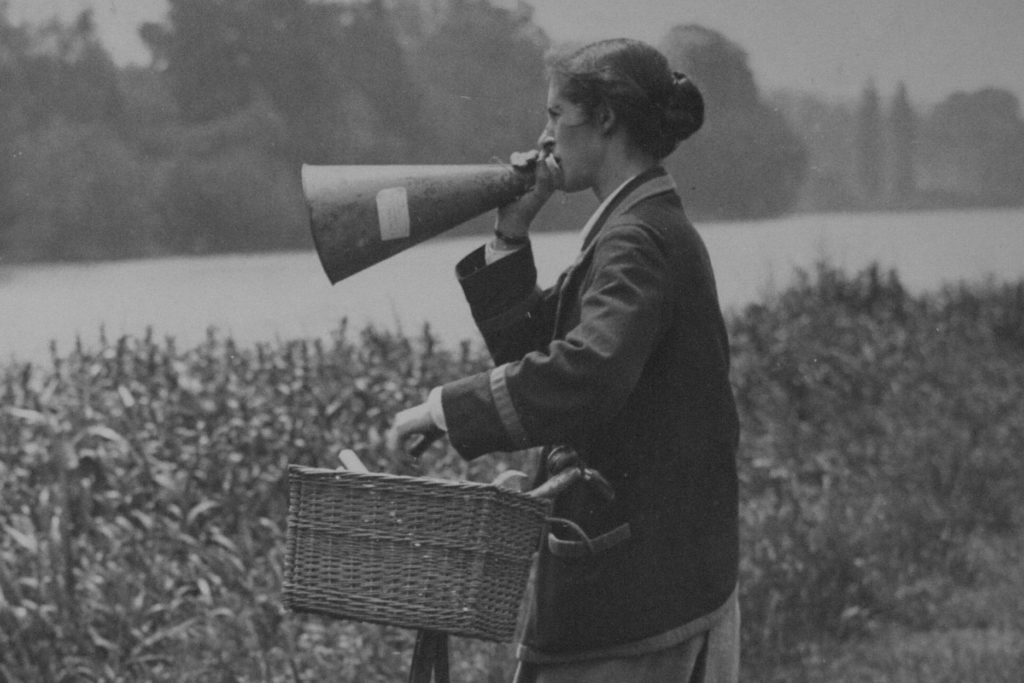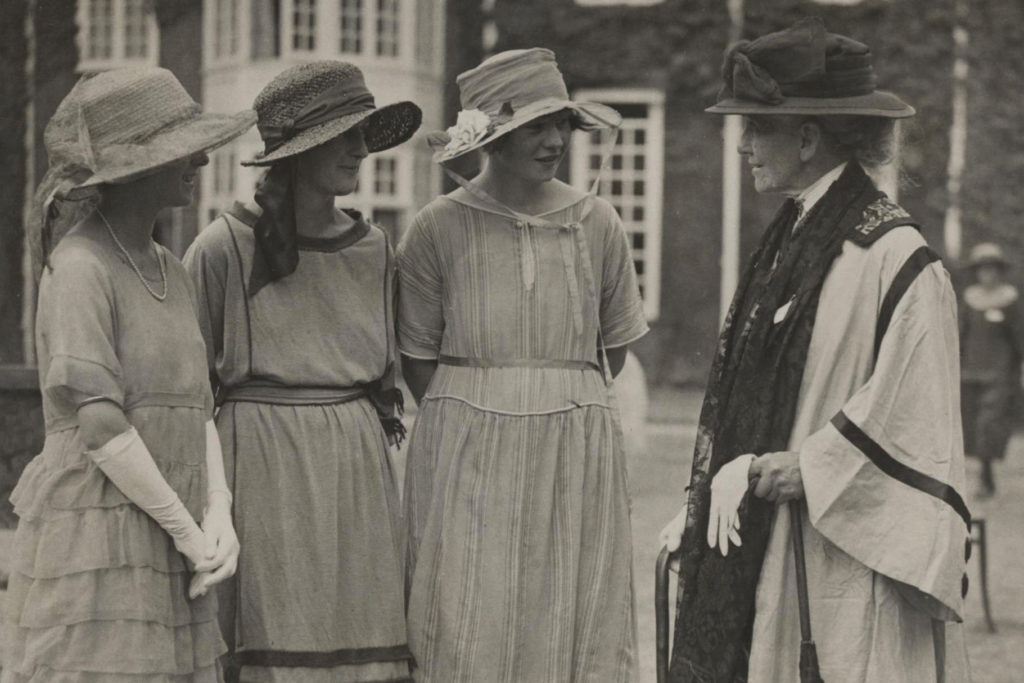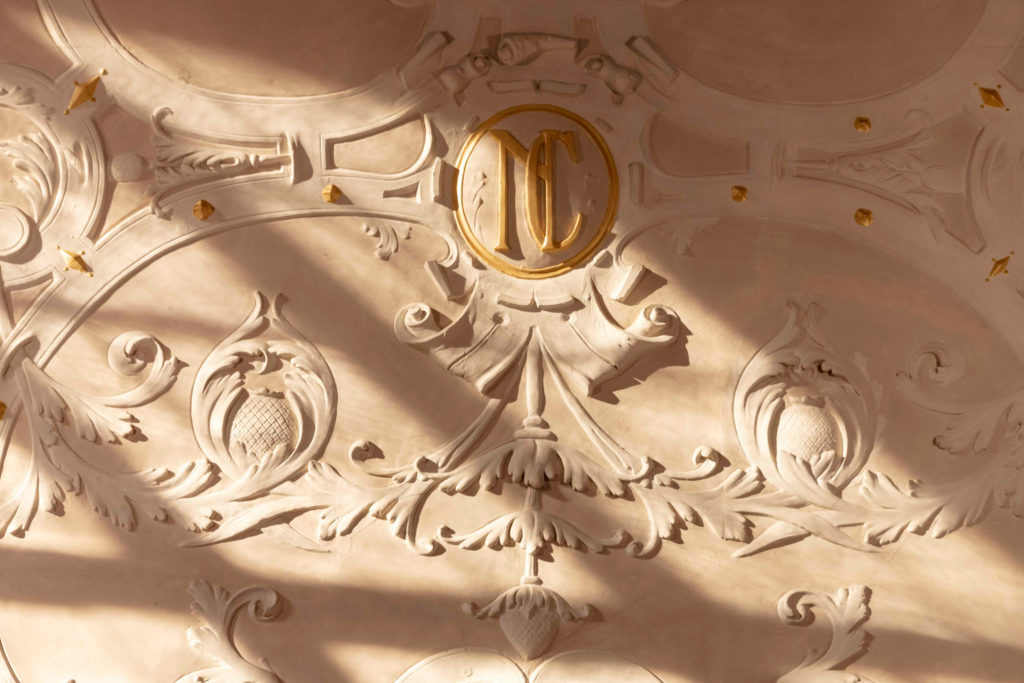From the late 1960s onward, and throughout the 1970s and 1980s, Newnham students were involved in the women’s liberation movement, the uptick in activism for gender justice, sometimes called ‘second wave feminism.’
The meticulous Cambridge women’s liberation collection, held at Girton College, speaks to the lively, liberatory and creative feminist activity women at Newnham got up to, in collaboration with women across the University of Cambridge and in the city of Cambridge. As detailed in the Cambridge women’s liberation newsletter this included campaigns within the university for adequate nursery provision as well as reading, discussion and consciousness raising groups which took place at Newnham. Students also participated in the Cambridge Women’s Centre including offering free contraceptive advice and pregnancy testing and running a women’s refuge for women and children fleeing domestic abuse. These are discussed below.

The Nursery Action Group
Women from across the University, including Newnham students, were involved in campaigns to reform Cambridge University. This included the Nursery Action Group (NAG) which campaigned against the ban on pushchairs and buggies in some colleges. The first protest, wittily called a ‘prampaign’, was reported in women’s liberation broadsheet Scarlet Woman, produced by Newnham students.

After successfully winning the right to bring buggies into colleges, NAG campaigned for nursery provision more broadly: ‘…we are concerned with the total lack of facilities available from the university to help with child care for both university staff and students.’ They campaigned for ‘regular half-term playgroup financed and run by the University,’ and for ‘full time creche facilities for parents with small kids.’
As a part of this campaign they ran half-term holiday events for children and petitioned the university, presenting a petition of 4,500 signatures in 1972 and held demonstrations and sit-ins. They targeted the university, and felt that all too often: ‘when confronted with an issue like the campaign for nurseries…the University deflects it onto the individual colleges, melting away like a Cheshire cat…leaving only its supercilious smile.’[2]
They did however, take the campaign to colleges too, and particularly argued that nursery facilities for parents who were studying should be provided because ‘incredibly large sums of money are consumed frivolously e.g. at (all-male) feasts which benefit a tiny percentage of the University community (if indeed feasts and other lavish expenditures have any benefit).’ Women from NAG picketed a Trinity Feast over college spending complete with ‘posters of pigs eating at high table, Nursery Action group placards and leaflets headed ‘wine and dine with sexist swine.”[3]
Women from Newnham were also involved in The University Group, which met at Newnham at the Sidgwick Fiction Library, and which held lively discussions on topics such as ‘marriage and women’s rights.’ There were also two ‘consciousness raising groups’ at Newnham on Tuesday nights, one in room 27 of Sidgwick and one in Old Hall. Here women could get together and talk about their lives, to see how their personal experiences were inflected with the political. A feminist reading group also met at Newnham on Thursday evenings.
Free Pregnancy Testing
The women’s liberation group based at Cambridge Women’s Centre at 48 Eden Street, Cambridge, also provided free pregnancy testing and contraceptive advice for women. Women from the university were involved in running this feminist centre. Advertising for this service started in April of 1972, feminists placed stickers on the backs of toilet doors and stuck posters around town. By September that year, the centre was doing on average three pregnancy tests a week, and had a ‘steady through not overwhelming number of phone enquiries’ about contraception. The organisers explain their political motivation in the Cambridge Women’s Liberation newsletter: ‘The existing sources of contraception and contraceptive advice are controlled by authority figures of one kind or another– the doctor, local authority or Family Planning Association…The knowledge may therefore be raised to a mystique. In medicine [this is done] partly through language which is incomprehensible to most people…often with the implied assumption that she couldn’t possibly understand.’[4]
As historian Jessie Olszyko-Gryn has discussed, by 1975, the Cambridge pregnancy testing group was doing 300 tests a year, all done on site, the necessary chemicals stored in the fridge of the Women’s Centre. [5] Often Addenbrookes Hospital and GPs would send people to the women’s centre, ‘often explicitly saying that we will give them results much quicker than if they have a test through the NHS system.’[6] The group had many discussions about what it meant to provide a service in a more efficient way than the state, when they felt it was really the job of the NHS to offer pregnancy testing. This group made links with the university, through women who were involved and by giving talks to the Cambridge Student Union and to Colleges to ‘raise consciousness about contraception.’ A national conference of pregnancy testers was held at Newnham College in 1978.
Cambridge Women's Refuge
Women involved in the women’s liberation movement worked to develop a women’s refuge for women and their children fleeing domestic violence in Cambridge. They worked in conjunction with Women’s Aid and the refuge opened in Autumn of 1977. This refuge received government funding though women were keen to stress ‘we control, the state pays.’ There were paid workers at the refuge but volunteers provided considerable (wo)man-power, and were buddied with those who used the service. Cambridge women explained the thinking behind this:
‘We’re determined that [the] paid workers will not be landed with all the responsibility and most of the work–some women’s aid groups have found this happening, and it's an intolerable burden on the workers and tends also to lead to the disintegration of the support group. So we will share the work out…We will try to make sure that each woman that comes to us is paired with someone in the support group. This shouldn’t mean that that person is solely responsible for the women in the refuge, but that she is the person most concerned with that woman’s problems and the person who had the closest relationship with her. We want this sharing of responsibility to become part of the structure of the household, so that the women in the refuge become able to run it themselves, without looking to us as authority figures.’ [6]
The women’s liberation newsletter features moving stories from women who sought refuge at Cambridge Women’s Aid:
‘Some weeks ago, feeling quite depressed, because of my hectic home life of constant rows and fights, I got to the stage where I didn’t know just what to do, until I got in touch with social services, which put me in touch with the women’s aid group…At first I didn’t know that I’ve taken the right step, but being here after only one week, in the perfect atmosphere, I know now that we’ve done the right thing….The house is totally run by us and being in the same position, we have something in common.’ [7]
Town and Gown
Women involved in the women’s liberation movement in Cambridge were aware of the class differences between women in the city and from the university. This awareness is present in some articles in the newsletter. Women write ‘Cambridge University dominates Cambridge–as an employer, as a landlord, as an island of privilege in a sea of ordinary lives…’ Romsey Town group, which was mostly made up of women who lived in the town interviewed women about their lives as women who worked in the home, and for the university. They published a small booklet about this and refer to the division of the city in their title, calling it ‘Women talking, the other Cambridge.’

Women were also aware of the different dynamics between women in the University and in Cambridge Town playing out in the women’s liberation movement. They wrote:
‘This year quite a lot of women from the University have been coming to Eden Street. This is good but it hasn’t happened so much in the past…but from the University side there can be a feeling of not being accepted as really having a right to be here and of being continually defined as a student even though that may be an identity you are trying to lose. On the town side there can be feelings of resentment of ‘intruders’ and of having to cover the same old ground again, and a feeling that credit is not always given for differences in experiences.’
But women did not feel that differences of class made working together impossible:
‘We feel that it would be useful to bear some of these comments in mind when we are trying to plan campaigns and activities in Cambridge so that resentments could be made open and dealt with, rather than glossed over or ignored….so that we can actually profit from the bizarre situation in Cambridge rather than feel oppressed by it.'[8]
[1] Prampaign, Scarlet Woman.
[2] The trinity college picket, Cambridge Women’s Liberation Newsletter.
[3] Linda and Jo, ‘Cambridge Colleges,’ Cambridge Women’s Liberation Newsletter, August 1976, p. 3.
[4] Cambridge Pregnancy Advisory Group, Cambridge Women’s Liberation Newsletter, No 1, June 1973, p. 3.
[5] Jesse Olszynko-Gryn ‘The Feminist Approach of Pregnancy Testing in 1970s Britain’ Women’s History Review 28:6, (2017), 869-894.
[5] ‘The Pregnancy Testing Group’ Cambridge Women’s Liberation Newsletter, Unnumbered, February 1975, p.2.
[6] ‘Women’s Aid’, Cambridge Women’s Liberation Newsletter, March 1977, p.8-9.
[7] ‘Greetings From Women’s Aid’, Cambridge Women’s Liberation Newsletter, November 1977, p. 8.
[8] Editorial, Cambridge Women’s Liberation Newsletter, July 1976, p.1.
Rosa Campbell is a doctoral candidate in history at the University of Cambridge. Her work explores the global history of Australian Women’s Liberation. She is also an editorial fellow at History Workshop Online, a magazine of radical, public history. Outside of academic work, she writes for adults and children on a range of platforms.

